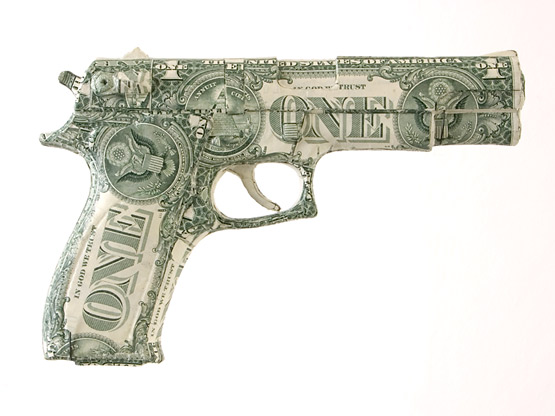The chapter on Exchange had a brief introduction on the history of money. Quite interesting, the images on bills are usually determined with prestigious contests, and they usually resemble the cultural values of the nation. The pop art followed it by the practice of “Moneygami,” the art of making origami with paper bills. This movement promotes the values and lifestyle that is enforced by the monetary system. Here, the Japanese artist Yosuke Hasegawa introduces a novel material perspective on money which reaches beyond its virtual value. An example of his work demonstrates leaders who are wearing hats that represent their respective culture:

If you are not a grad student and you have a dollar or two to spare, you could even make your own dollar bill ring:
Of course, money is the medium in which exchange takes place. This transaction could be used to own goods or services. The artist Justine Smith built sculptures out of money, demonstrating a “behind-the-scenes” investigation on the role of money. These sculptures point out that the very same currency that could be spent on one’s well-being can also be spent to fund wars and empower authoritarian regimes around the world. By shaping the paper bill into guns, grenades, and weapons, the artist creates a bridge between the virtual notion of money and the instrument that is being traded. One can directly tell how the instrument of money serves a purpose which is mostly represented as an innocent act of establishing law and order in a society:

While Pink Floyd had summarized how money works marvelously and concisely in their famous song, “Money,” the rules of how money works might be subject to changes because of the virtual currency systems. The most famous and controversial one is the Bitcoin. While the gold rush of the 21st century had started by many people devoted themselves to Bitcoin mining, it found its use as an exchange tool in arts as well. While digital music streaming services such as Spotify and Deezer are the successors of the Napster era, they only pay a small fraction to artists, and it is based on per play count. This led musicians to seek ways of accepting digital currency in exchange of digital media. One example is the band Mastodon whom one can purchase its albums with Bitcoins. The advent of digital currencies was not discussed in the book as it might be too early to assess its impact on the existing monetary system.
Leave me a Comment